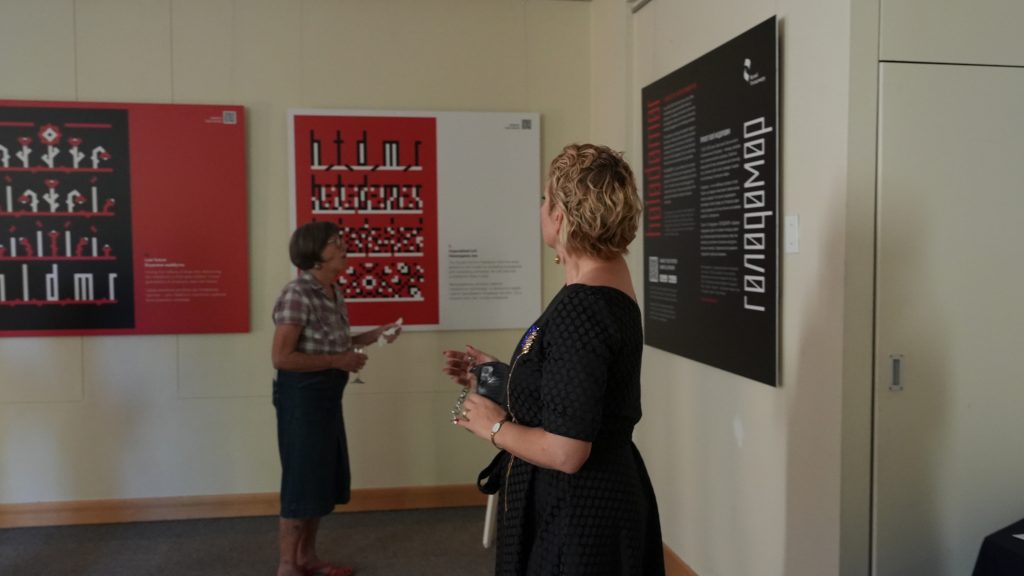Login
Signup
Art project of Yulia Fedorovych on 90th anniversary of Holodomor
Holodomor Exhibition In Cape Town Holocaust And Genocide Centre
Holodomor Exhibition in Cape Town Holocaust and Genocide Centre

The exhibition is free to enter from 27 November to 15 December
at the Cape Town Holocaust & Genocide Centre
Address: 88 Hatfield St, Cape Town City Centre, Cape Town, 8001
Monday-Saturday 10:00 am – 05:00 pm (on Friday until 02:00 pm)
In November 2023, Ukraine reflects on the 90th anniversary of Holodomor, a tragic chapter that profoundly impacted the lives of millions of Ukrainians. At our recent commemorative event, we assembled to pay tribute to those affected and bear witness to the victims of the man-made famine meticulously orchestrated by the Soviet Regime. Our collective aim was to heighten awareness about the significance of acknowledging and learning from this dark chapter in history. In doing so, we honor not just the numbers and statistics but the human stories, the extinguished family trees, and the millions of lives forever fractured.
This year, with support from the Embassy of Ukraine to South Africa and in collaboration with the National Museum of the Holodomor-Genocide in Kyiv, UAZA successfully opened the Holodomor exhibition at the Cape Town Holocaust and Genocide Centre located at 88 Hatfield St.
In a series of posters, Ukrainian artist Yuliya Fedorovych tells the story of the Holodomor in her own way – she defines the key prerequisites, facts and consequences of the tragedy of the 1930s, putting them together in a new visual language. The latter reflects the synthesis that Ukrainian culture underwent in the 20th century – traditional elements of folk embroidery, allusions to which appear on posters, are woven into the general style of constructivism of the 1920s and 1930s.
Each of the posters is also available in augmented reality, in which every fact of the past appears live, so take your cell phone with you when visiting the exhibition– scan the code on the painting for an interactive art experience that tells a powerful story.
The exhibition is open for visitors until December 15th , so seize the opportunity to visit in Cape Town Holocaust and Genocide Centre located at 88 Hatfield Street !
More information on the Exhibition “HØLØDØMØR”
Art project of Yulia Fedorovych
History always depends on the speaker, the same objectively accomplished facts of the past can be put into different narratives, sometimes with completely opposite morals. That is why, when studying history, it is worth paying attention to the figure of its author every time.
The story of the Holodomor is also not a linear story. Every Ukrainian family has a personal history, it is the memory of ancestors, events and circumstances that happened to them. They can be completely different from each other, they can be similar, but in the end they are all united in a continuous narrative of the history of the genocide of the Ukrainian people in 1932-1933 .
Yulia Fedorovych’s project demonstrates the parity of the great and personal history of the Holodomor. Mystkina outlines the course of events of this tragedy in the first part – a series of posters called “ГØЛØДØМØР” (“HØLØDØMØR”) and tells the personal story of an eyewitness to the Holodomor in the animated film “My name is Yevgenia Sakevich-Dallas” .
In a series of posters, Fedorovych tells the story of the Holodomor in his own way – he defines the key prerequisites, facts and consequences of the tragedy of the 1930s, putting them together in a new visual language. The latter reflects the synthesis that Ukrainian culture underwent in the 20th century – traditional elements of folk embroidery, allusions to which appear on posters, are woven into the general style of constructivism of the 1920s and 1930s. Each of the posters is also available in augmented reality, in which every fact of the past appears live.
Yuliya Fedorovych’s street exhibition of posters “HØLØDØMØR” was exhibited from August 15 to September 15 at Slavy Square.
The animated film “My name is Yevgenia Sakevich-Dallas” is dedicated to the story of a public figure, artist, Ukrainian-language writer and model, who suffered all the most traumatic episodes of the 20th century – the Holodomor, deportation, war, captivity and, ultimately, emigration. However, this is rather a story about luck, indomitability and strength of spirit, which Evgenia has preserved despite what she has experienced.
The film “My name is Yevgenia Sakevich-Dallas” can be viewed in the Hall of Remembrance during the opening hours of the Holodomor Museum.
About the author:
Yuliya Fedorovych is a visual communication designer, an artist. In 2021, she received her Master of Arts degree (MFA) from the University of Notre Dame in the USA. Scholar of the Fulbright and Edmund S. Muskie programs. The focus of her work is the visualization of the complex history and heritage of Ukraine and Eastern Europe. Award-winning works are exhibited in galleries in the USA, Canada and Ukraine.
The project was implemented jointly with the National Museum of the Revolution of Dignity
Source: Holodomor Museum of Ukraine
Yulia Fedorovych telling more about her project on her YouTube Channel in video HØLØDØMØR: a project overview
Also, please take a look at the short documentary about the artist and her project:
